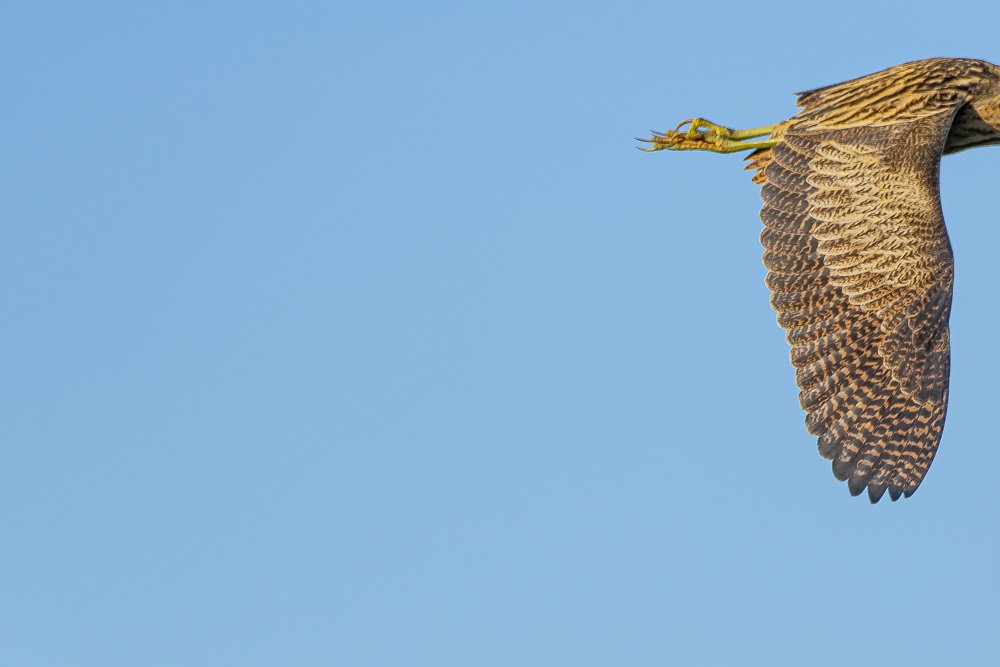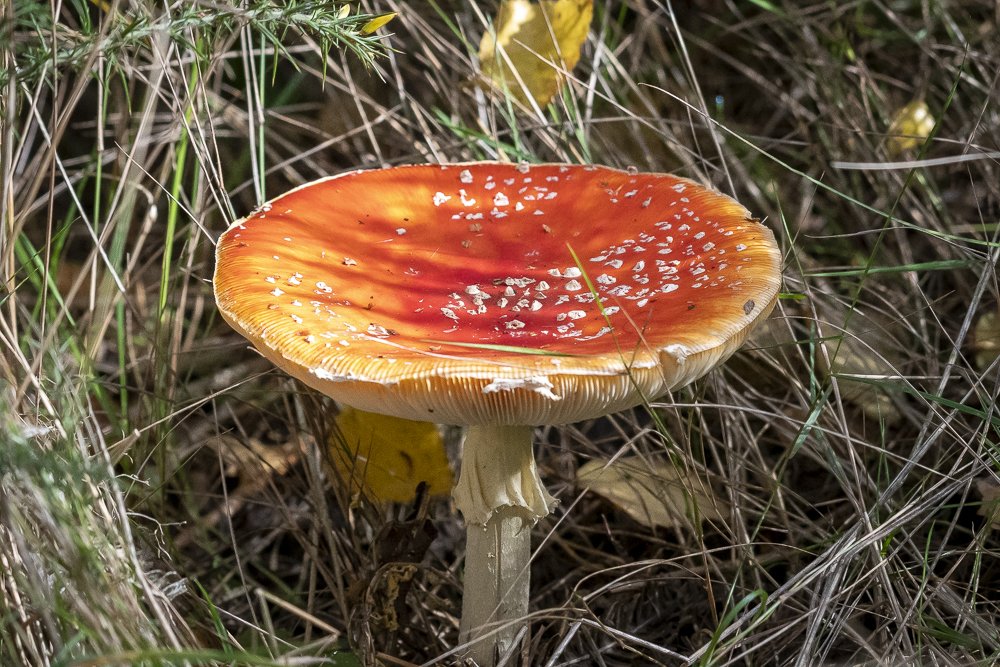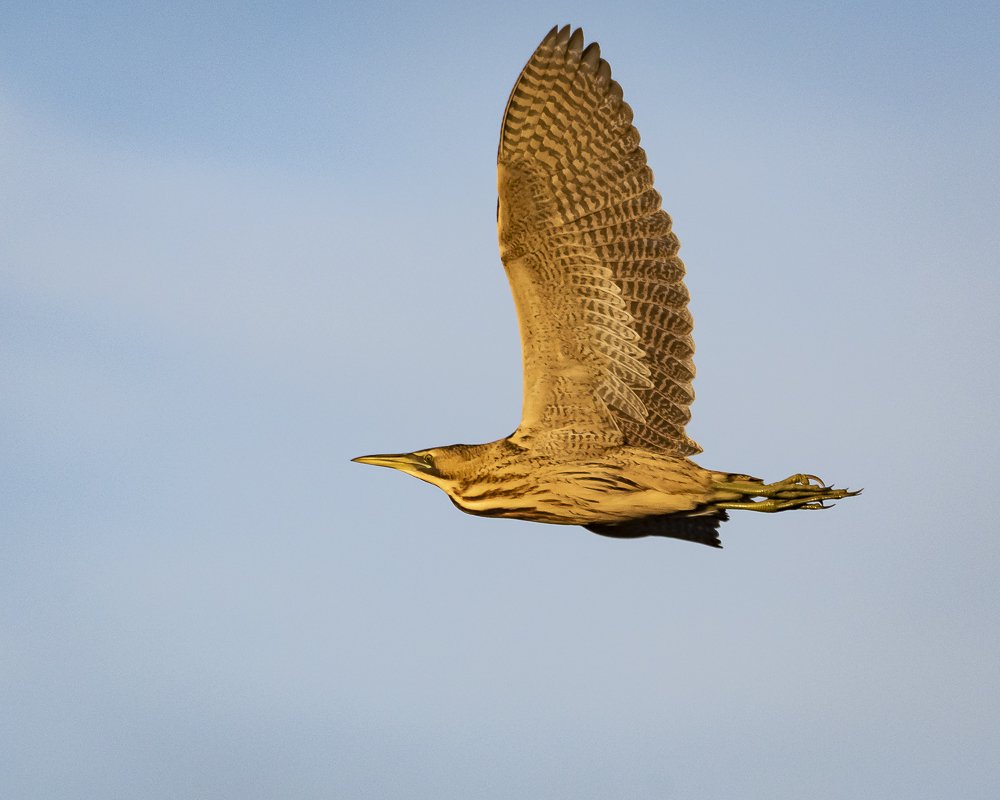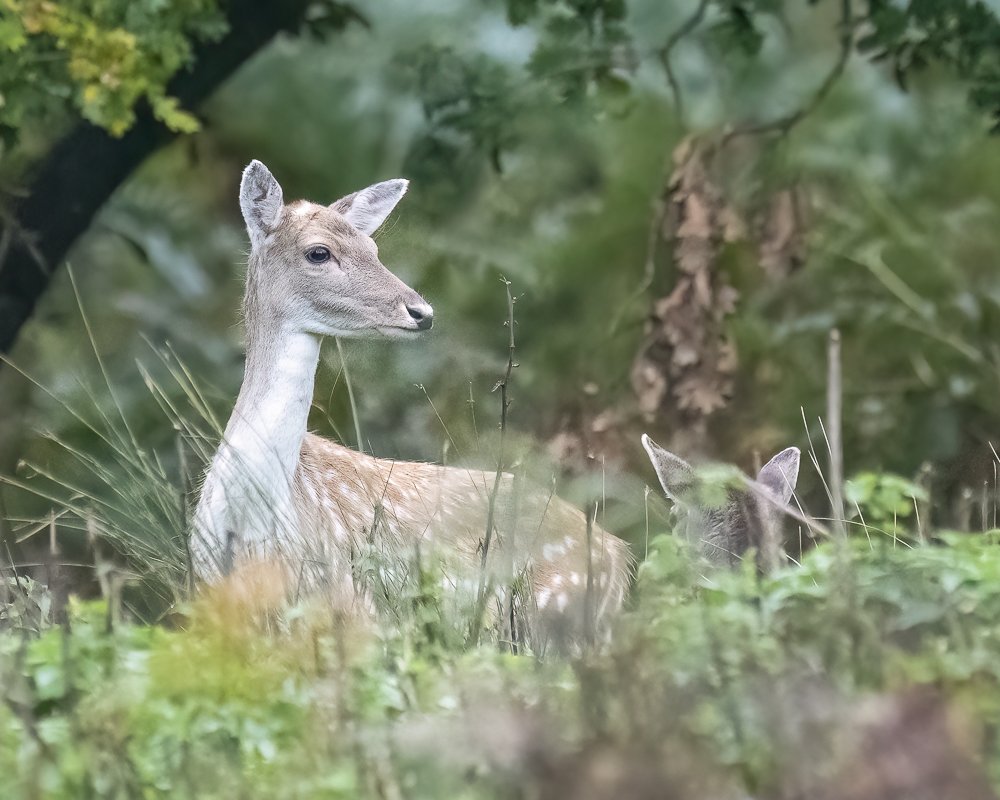At the start of the month we were looking forward to a week of wildlife watching in Suffolk. We had booked a small cottage only a ten minute drive from Dunwich and RSPB Mindsmere. The Suffolk scenery did not disappoint but the scrapes on the reserve at Mindsmere were dry. We are not sure if it was caused by the lack of rainfall this summer, or by design, as they were re working the area with diggers, or maybe both. So nothing to see there. The best hide was the Island Mere hide which overlooked water and we regularly saw Bitterns, Marsh Harriers and Great White Egrets.
Marsh Harrier, Mindsmere.
Herself was still suffering with the after effects of covid a bit, and did not quite manage to react fast enough, so lots of not quite pictures, like this nearly a Bittern. But it is in focus……
There was a large herd of Red Deer around and you could hear the stags bellowing. This young stag kept hovering on the edge of a herd.
Himself was up early one morning dog walking on Westleton Heath when he spotted a very big stag in the distance with about forty hinds. The stag is known to the locals as “big boy”and has been around for a few years.
Marsh Harrier being hassled by a Carrion Crow.
A Great White Egret landing in front of the hide. Due to our improving wetland areas we can see these everywhere now.
Another Bittern flypast. We were so lucky to see these.
A Coal Tit at the Mindsmere visitor centre. One of many different types of birds constantly visiting the feeders.
These old signs are much more attractive than the new modern purpley/pink ones now used by the National Trust.
Fly Agaric Fungus on the heath.
Red Banded Sand Wasp. A solitary parasitc wasp found in mostly sandy areas. The females, hunt caterpillars mainly on sunny days, paralysing them with a sting, and burying them in a burrow with a single egg. The species is also remarkable for the extent to which females steal from nests of other females to provision their own nests, or even remove the other female's egg and laying one of her own instead. No wonder they are solitary.
Our little constant companion whilst we were eating Bacon Rolls and Coffee at the Dunwich Heath Cafe.
Later on in the week we had really good Fish and Chips at the Beach cafe in Dunwich. We can recommend.
Southwold Pier on a dull morning.
Walberswick Dunes.
Redshank in the estuary at Walberswick.
The tide was out so this Black Tailed Godwit was making the most of the mud, burying his whole beak down into the silt.
We stopped to watch a flock of Curlews, about eight or more in the field. But of course as soon as we got out of the car they flew, so took a picture across to the Blythe Estuary instead. Stunning views.
Shingle Street. Quite desolate and a unique landscape all of its own.
Proving that you can make a garden anywhere as this artist at Shingle Street has done. Just go with the landscape.
Colourful beach Huts at Pakefield Beach.
Back at the Island Hide, Mindsmere for one last evening before home. The Marsh harriers were still flying as were the Great Egrets and the Bitterns.
Great White Egret
Bittern, a strange almost pre historic looking bird. One of the rarest breeding birds in the UK, a secretive and difficult to see member of the heron family. After being driven out by the Victorians, bitterns are now spreading into areas of the country they haven't been seen in for centuries. We now have the highest number of Bitterns in the UK since 1880. Wow!
Our Pyracanthas are loaded with berries this year and one of the Blue Tits has got a taste for them.
October is the time for the Deer Rut. This year we went to Bradgate Park in Leicester. Bradgate Park, is renowned for its fine herds of deer, Red and Fallow, and is the only remaining enclosed medieval deer park in the East Midlands and also contains the oldest rocks in England.
The park is also the birthplace and childhood home of the nine days 16th century Queen of England, Lady Jane Grey. You can explore the ruins of her home - one of the earliest country houses built for royalty.
The fallow deer is variable in colour, but is mostly pale gingery-brown, with white spots on the back, a characteristic black and white tail and a white rump patch outlined in black. Some animals are darker brown without any spots, and others are very pale, almost white. All the colour variations of Fallow Deer can be seen at Bradgate. A very pretty Deer.
Female Fallow Deer.
Male fallow deer, they are quit a bit smaller than the Red Deer Stags.
A juvenile male Red Deer with quite sore looking first year antlers, can you see the shape of an animal or birds head in its left ear.
A pair of Red Deer Stags in full flow, lasting about half an hour they were very evenly matched. There was no holding back, lots of clashing of antlers, and pushing to see who was strongest, although blood was not drawn it was close. A fight like this is best watched from a safe distance.
Pretty female Fallow deer with a fawn.
Its all a bit exhausting for some Stags.
We had a really good day and will definitely be going back.































